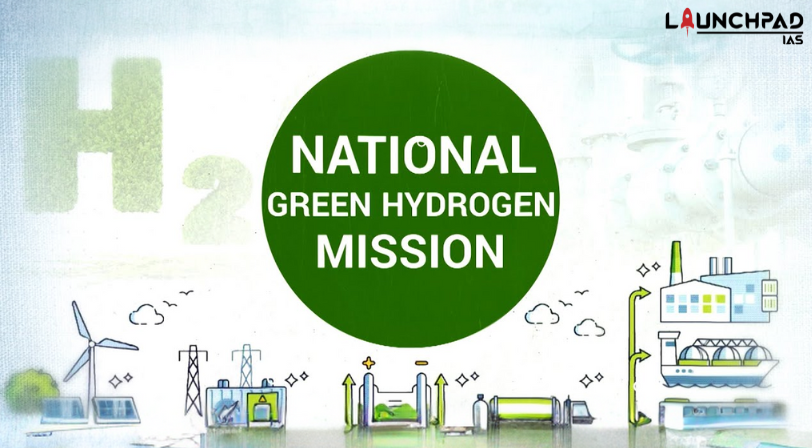About
- National Green Hydrogen Mission is a program to incentivize the commercial production of green hydrogen and make India a net exporter of fuel.
- The Mission will facilitate demand creation, production, utilization, and export of Green Hydrogen.
Objective of National Green Hydrogen Mission
- Developing green hydrogen production capacity of at least 5 MMT (Million Metric Tonne) per annum, alongside adding renewable energy capacity of about 125 GW (gigawatt) in India by 2030.
- It aims to entail over Rs 8 lakh crore of total investments and is expected to generate six lakh jobs.
- It will also lead to a cumulative reduction in fossil fuel imports by over Rs 1 lakh crore and an abatement of nearly 50 MT of annual greenhouse gas emissions.
Nodal Ministry
The Nodal Ministry of National Green Hydrogen Mission is the Ministry of New and Renewable Energy.
Significance
National Green Hydrogen Mission will help entail the de-carbonisation of the industrial, mobility, and energy sectors; reducing dependence on imported fossil fuels and feedstock; developing indigenous manufacturing capabilities; creating employment opportunities; and developing new technologies such as efficient fuel cells.
Potential
- India has a favorable geographic location and an abundance of sunlight and wind for the production of green hydrogen.
- Green hydrogen technologies are being promoted in sectors where direct electrification isn’t feasible.
- Heavy duty, long-range transport, some industrial sectors, and long-term storage in the power sector are some of these sectors.
- The nascent stage of this industry allows for the creation of regional hubs that export high-value green products and engineering, procurement, and construction services.
Different types of hydrogen:
- Hydrogen is the lightest and first element on the periodic table. Since the weight of hydrogen is less than air, it rises in the atmosphere and is therefore rarely found in its pure form, H2.
- At standard temperature and pressure, hydrogen is a non-toxic, nonmetallic, odorless, tasteless, colorless, and highly combustible diatomic gas.
- Hydrogen fuel is a zero-emission fuel burned with oxygen. It can be used in fuel cells or internal combustion engines. It is also used as a fuel for spacecraft propulsion.
Grey Hydrogen:
- Constitutes India’s bulk Production.
- Extracted from hydrocarbons (fossil fuels, natural gas).
- By product: CO2
Blue Hydrogen:
- Sourced from fossil fuels.
- By product: CO, CO2
- By-products are Captured and Stored, so better than grey hydrogen.
Green Hydrogen:
- Generated from renewable energy (like Solar, Wind).
- Electricity splits water into hydrogen and oxygen.
- By Products: Water, Water Vapor
Brown Hydrogen:
- Produced using coal where the emissions are released into the air.
Challenges
Despite the National Green Hydrogen Mission’s potential, challenges include the relatively high cost of producing hydrogen from renewable sources compared to fossil fuels and uncertainties regarding achieving the target of becoming a high-tech manufacturing hub. India’s weak manufacturing base and its inability to effectively absorb global capital further pose challenges.
Way Ahead
- To ensure the success of the NGHM, India should strengthen the infrastructure of small manufacturing and allied enterprises, pivotal components of the green economy.
- Coordination among various government entities, a public-private partnership (PPP) model for investment and policy support, and focused efforts to enhance the manufacturing base are essential for making the mission a game changer in the energy sector.


